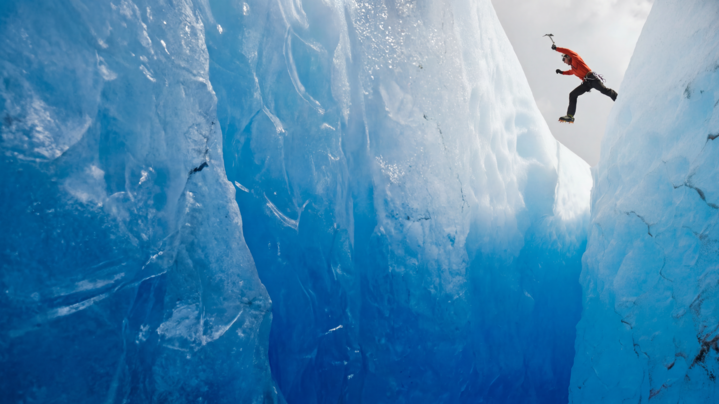Table of contents
Heavy equipment plays a critical role in industries such as construction, agriculture, and manufacturing, enabling businesses to perform essential tasks efficiently and effectively. Whether it's excavators, tractors, or industrial machinery, having the right equipment is crucial for operational success and growth.
However, acquiring such high-cost assets can be a significant financial burden, especially for small to medium-sized businesses. This is where heavy equipment financing comes in. By leveraging financing options, businesses can obtain the necessary machinery without the need for substantial upfront capital. Financing offers flexibility, preserves cash flow, and provides opportunities for companies to expand their operations and stay competitive.
What Is Heavy Equipment Financing?
Heavy equipment financing refers to the financial solutions available to businesses for acquiring large machinery and equipment necessary for their operations. Instead of paying the full purchase price upfront, businesses can spread the cost over time through various financing arrangements. This approach makes it easier to manage cash flow, invest in high-quality equipment, and maintain operational flexibility.
Different types of heavy equipment financing options include:
- Equipment Loans: Equipment loans are traditional loans where a business borrows money to purchase equipment. The equipment itself often serves as collateral for the loan. These loans typically have fixed interest rates and repayment periods ranging from one to seven years. Once the loan is repaid, the business owns the equipment outright, potentially providing long-term value.
- Equipment Leasing: Equipment leasing allows businesses to use the equipment for a specified period without owning it. Operating Leases are short-term leases where the lessee returns the equipment at the end of the lease period. Capital leases are long-term leases that often include an option to purchase the equipment at the end of the term. Benefits include lower upfront costs and the flexibility to upgrade equipment regularly.
- Hire Purchase: A hire purchase agreement allows businesses to pay for equipment in installments while using it. Ownership transfers to the business after the final payment. Terms are similar to loans, but the business gradually acquires ownership over the repayment period. It combines the benefits of leasing with eventual ownership.
- Vendor Financing: Some equipment manufacturers or dealers offer financing directly to buyers. Terms can vary widely, often tailored to the buyer’s needs. This form of financing is convenient and may include favorable terms or discounts.
- Lines of Credit: A revolving credit line that businesses can draw from as needed to finance equipment purchases. The terms are flexible, with variable interest rates and repayment terms. Benefits include that it provides quick access to funds for various equipment needs.
Benefits of Heavy Equipment Financing
Some financial benefits of using heavy equipment financing include:
1. Cash Flow Management
Heavy equipment financing helps businesses manage their cash flow more effectively by spreading the cost of expensive machinery over time. This means that companies can preserve their working capital for other operational needs, such as payroll, marketing, and inventory management. Instead of making a large upfront payment, businesses make manageable monthly payments, ensuring they maintain a healthy cash flow.
2. Tax Advantages Financing
Heavy equipment can offer significant tax benefits. Payments made on equipment leases and loans can often be deducted as business expenses, reducing the overall taxable income. Additionally, certain financing options may qualify for Section 179 deductions, allowing businesses to write off the full purchase price of the equipment in the year it was purchased. This can result in substantial tax savings and improve the company's financial position.
3. Fixed Payments
Many financing agreements come with fixed interest rates, meaning monthly payments remain consistent throughout the loan or lease term. This predictability allows for better financial planning and budgeting, as businesses can accurately forecast their expenses without worrying about fluctuating interest rates.
Additional operational benefits of heavy equipment financing include:
- Access to the Latest Technology: Financing allows businesses to acquire the latest equipment and technology without waiting to accumulate the necessary capital. This access to advanced machinery can enhance productivity, improve product quality, and increase operational efficiency. Staying current with the latest technology also helps businesses remain competitive in their industry.
- Improved Efficiency and Productivity: Modern heavy equipment is designed to perform tasks more efficiently and with greater precision than older models. By financing new machinery, businesses can benefit from these improvements, leading to faster project completion times, reduced downtime, and lower operating costs. This enhanced efficiency translates to higher output and increased profitability.
- Flexibility Equipment: financing offers flexibility in terms of upgrading or replacing machinery. With leasing options, businesses can upgrade to newer models at the end of the lease term, ensuring they always have access to state-of-the-art equipment. This flexibility allows companies to adapt to changing market conditions and technological advancements without being tied to outdated machinery.
- Preservation of Credit: Lines Using equipment financing rather than traditional bank loans helps preserve existing credit lines. This can be crucial for businesses needing to maintain liquidity and have access to funds for other purposes, such as expansion or unexpected expenses. Maintaining healthy credit lines also enhances the company's creditworthiness and borrowing capacity for future needs.
Heavy Equipment Financing vs Leasing: Pros and Cons
Equipment loans are a common financing option where a business borrows money to purchase heavy machinery. The purchased equipment itself typically serves as collateral for the loan. The lender provides a lump sum that the business repays over a fixed term, usually with fixed interest rates. Repayment periods for equipment loans can range from one to seven years, depending on the lender and the amount borrowed.
| Pros | Cons |
|---|---|
|
|
Equipment leases allow businesses to use heavy machinery for a specified period without purchasing it outright. There are two primary types of leases: operating leases and capital leases. Operating leases are short-term and typically do not include an option to buy the equipment at the end of the lease term. Capital leases, on the other hand, are long-term and often allow the business to purchase the equipment at a reduced price or fair market value at the end of the lease.
| Pros | Cons |
|---|---|
|
|
Choosing between loans and leases for heavy equipment financing depends on the business's financial situation, long-term needs, and strategic goals. While loans offer ownership and potential tax benefits, leases provide flexibility and lower upfront costs. Businesses should carefully evaluate their specific circumstances and consult with financial advisors to determine the best financing option for their needs.
How to Apply for Heavy Equipment Financing
Applying for heavy equipment financing involves several steps, documentation, and strategic preparation. Here is a comprehensive guide to help you navigate the application process effectively.
The 8 steps to apply for heavy equipment financing are:
- Assess Your Financing Needs: Determine the type of equipment you need and its cost. Decide whether you prefer a loan or lease based on your business’s financial situation and long-term plans.
- Research Lenders and Financing Options: Look for lenders that specialize in heavy equipment financing. Compare interest rates, terms, fees, and other conditions. Check reviews and seek recommendations from industry peers.
- Prepare Your Business Plan: Outline your business’s financial health, including revenue, expenses, and cash flow. Highlight how the equipment will benefit your business and contribute to growth. Include detailed financial projections.
- Gather Required Documentation: Financial statements (balance sheets, income statements, and cash flow statements) for the past two to three years. You’ll also need business tax returns, personal financial statements, tax returns of the business owner(s), a detailed list of existing debts and liabilities and information about the equipment, including quotes or purchase agreements.
- Complete the Application: Fill out the lender’s application form, providing accurate and complete information. Attach all required documentation. Double-check the application for any errors or omissions.
- Submit the Application: Submit your completed application and documentation to the lender. Some lenders offer online applications, while others may require physical submission.
- Follow Up with the Lender: After submitting the application, follow up to confirm receipt and address any additional questions or documentation requests. Maintain open communication with the lender throughout the review process.
- Review the Loan or Lease Agreement: If approved, carefully review the terms and conditions of the loan or lease agreement. Ensure you understand the interest rate, repayment schedule, fees, and any other obligations. Seek legal or financial advice if necessary before signing the agreement.
Some tips for increasing your chances of approval for equipment financing include:
- Maintain Strong Financial Records: Keep accurate and up-to-date financial statements. Ensure your tax returns are filed on time and accurately reflect your business’s financial status.
- Build a Good Credit History: Monitor your business and personal credit reports regularly. Pay bills and existing loans on time to maintain a strong credit score. Address any discrepancies or issues on your credit report before applying.
- Provide a Detailed Business Plan: Clearly articulate how the equipment will enhance your business operations and contribute to growth. Include realistic financial projections and demonstrate your ability to repay the loan or lease.
- Choose the Right Lender: Select a lender that specializes in your industry and has experience with heavy equipment financing. Establish a relationship with the lender and seek their advice on preparing a strong application.
- Prepare Thoroughly: Gather all required documentation in advance to streamline the application process. Be prepared to answer questions about your business’s financial health and plans for the equipment.
- Offer Collateral: If possible, provide additional collateral to secure the loan and reduce the lender’s risk. This can improve your chances of approval and potentially lead to better loan terms.
By following these steps, preparing the necessary documentation, and strategically positioning your business, you can improve your chances of securing heavy equipment financing. This will enable you to acquire the machinery needed to grow and sustain your business operations effectively.
Factors to Consider When Choosing a Financing Option
Interest Rates and Terms
Interest rates and loan terms are critical factors to consider when choosing a financing option for heavy equipment. The interest rate determines the cost of borrowing and can significantly impact your overall financial burden. Lower interest rates mean lower monthly payments and less interest paid over the life of the loan or lease. However, interest rates can vary based on your creditworthiness, the type of equipment, and market conditions.
Loan terms, or the length of the repayment period, also play a significant role. Shorter terms generally come with higher monthly payments but lower overall interest costs. Longer terms reduce monthly payments but increase the total interest paid. It’s essential to strike a balance between affordable monthly payments and the total cost of financing. Carefully review and compare the interest rates and terms offered by different lenders to find the most cost-effective option for your business.
Flexibility of Payment Options
The flexibility of payment options can make a significant difference in managing your cash flow and financial planning. Some financing arrangements offer fixed monthly payments, which provide predictability and ease of budgeting. Others may offer variable payments, which can fluctuate based on interest rates or other factors.
Additionally, consider whether the financing option allows for early repayment without penalties. This can be beneficial if your financial situation improves and you want to pay off the debt sooner to save on interest. Flexible payment schedules, such as seasonal or quarterly payments, may also align better with your revenue cycles, especially for businesses with fluctuating incomes.
Equipment Type and Lifespan
The type of equipment and its expected lifespan should influence your financing decision. For equipment with a long useful life, such as construction machinery or industrial equipment, a loan might be a better option because you eventually own the asset outright. This can be advantageous if the equipment retains its value and remains productive for many years.
For equipment that may become obsolete quickly or require frequent upgrades, such as technology or specialized machinery, leasing might be more appropriate. Leasing allows you to upgrade to newer models at the end of the lease term, ensuring you always have access to the latest technology without being burdened by outdated equipment.
Consider the maintenance and repair costs associated with the equipment as well. Financing options that include maintenance packages can reduce operational disruptions and extend the lifespan of the equipment.
Conclusion
Heavy equipment financing offers numerous benefits, including improved cash flow management, access to the latest technology, and flexible payment options. By spreading the cost over time, businesses can acquire essential machinery without straining their financial resources. Understanding the various financing options—loans, leases, and more—allows you to choose the best solution tailored to your operational needs and financial situation.
If you're looking to enhance your business operations and stay competitive, now is the time to explore heavy equipment financing. Complete our digital application to unlock the equipment financing offers your company qualifies for!






